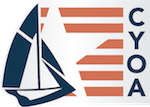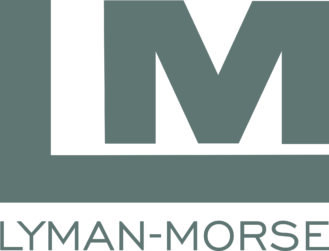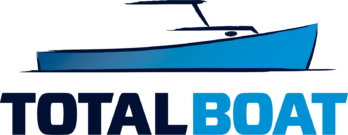CRF (Classic Rating Formula) was developed as a measurement system for rating yachts of varying types and sizes with traditional, full-keeled designs. The CRF was an adaptation and development of the old CCA Rule, adjusted over time for classics – for use in the Opera House Cup, The MOY Classic Yacht Regatta, and the Herreshoff Rendezvous.
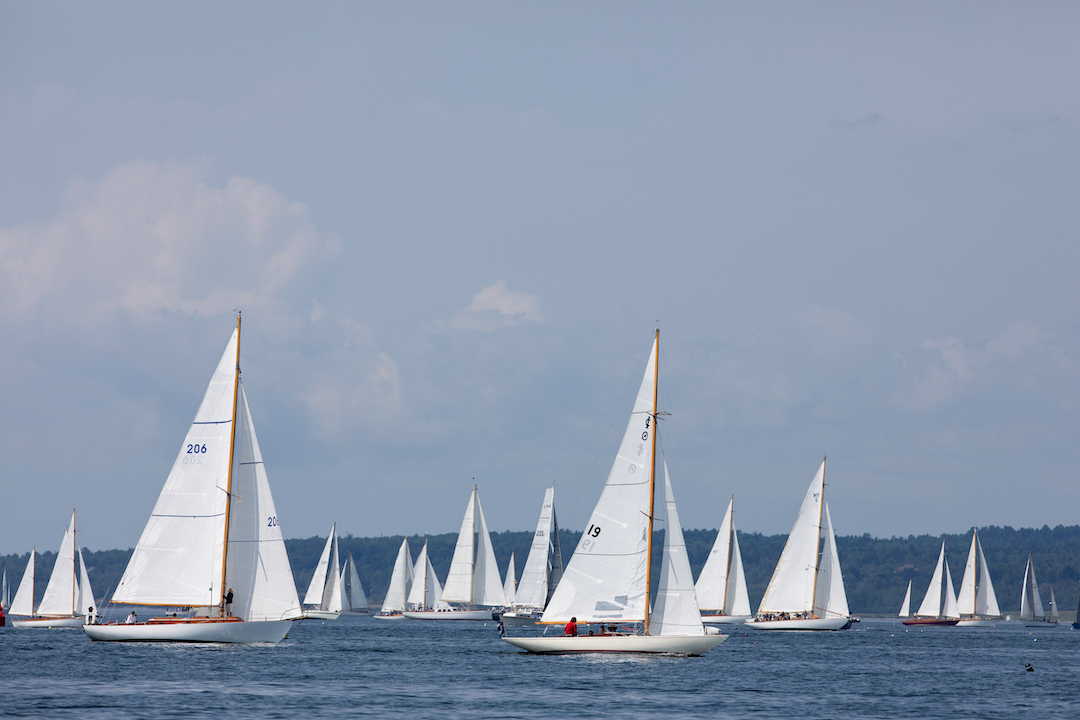
However, it wasn’t a single entity issuing ratings. It was used in various forms by different classic races along the East Coast during the 80’s. Every event was using a custom variation of the formula and the same boats would have wildly different ratings from event to event. In the late 80’s an attempt to create a standardized rating system among all events so ratings were consistent, created the WoodenBoat Regatta Series.
The WoodenBoat Regatta Series, and the CRF Ratings were coordinating dates, schedules, and issuing consistent rules and ratings for Classics – meeting annually and agreeing on all rules and adjustments. Only the OHC used their own custom variation during that time while all other events (as many as 12 per season) used the CRF formula. The North American Panerai Classic Yacht Challenge (NAPCYC) took over that role in the 2000s, and managed the coordination of rules and ratings until 2016.
In 2016, the Classic Yacht Owners Association (CYOA) formed a technical committee to review CRF versus other rating alternatives including PHRF, Europe’s CIM, and an ORC VPP-based system. The group quickly recognized that current CRF ratings provide a reasonable reflection of the real world performance potential of some yachts within classes of similar sizes and types. However, the Committee also recognized that there were notable exceptions, and as a means of addressing those shortcomings, the Committee developed a comprehensive reformulation of CRF that was dubbed ‘CRF MkII’. The formulae underlying the MkII proposal were based on the CRF 2016 data requirements. Starting in 2020, the CRF will be referred to by year of issue (CRF 2020.)
A CRF rating continues to be based on owner-supplied measurement inputs and no subjective adjustments are made to the calculated ratings. A CRF rating is expressed on the certificate both in decimal feet and in seconds per mile. The formulae and factors on which the CRF rating calculations depend are refined annually based on a quantitative analysis of race results from previous seasons, so ratings often change slightly from one year to the next. CRF is committed to full transparency, so all valid certificates and the calculations on which the ratings are based are available for inspection online.
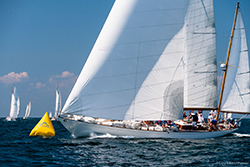
CRF 2024 Technical Committee
- Jim Taylor, Chair
- Adam Langerman
- Joe Loughborough
- Bob Stephens
- Greg Stewart
- Susan Wayne
- Steve White
- Glenn Cook
- Peter Gerard
CRF Background, Formulae, and Factors
The Classic Rating Formula (CRF) was first developed in the 1980’s to encourage participation in classic yacht racing by providing a rating system that was tailored to suit the unique characteristics of those boats. After decades of both increasing interest and resulting pressure on the ratings that were produced, a newly formed Classic Yacht Owners Association (CYOA) recognized that it was time to take a fresh look at the details of the system used. A technical committee was formed not only to evaluate CRF as it was, but also to consider alternatives such as Europe’s CIM, PHRF, and even a sophisticated VPP based system. In the end, the committee decided that the best approach would be to fundamentally rework CRF, and the result of this effort, then dubbed CRF MkII, debuted at the start of the 2017 classic racing season.
The current version of CRF maintains continuity with its original form by keeping a similarly firm focus on providing fair racing for classic yachts, and by keeping it ‘user friendly’ by embracing the use of owner declared data rather than requiring official measurers. Most (but not quite all) of the required data declarations for CRF now are the same as those needed by its original form, the ratings of most boats relative to others in the classic fleet have remained similar.
Going forward, the primary goals of CRF are to refine the rating formulae annually, based on careful quantitative analysis of race results after each season, and to maintain full transparency in the way the ratings are generated. All of the formulae and factors used in calculating a CRF rating are published on- line (see below), and there are no subjective adjustments made to ratings. It is a straightforward ‘data in and ratings out’ calculation for all boats, and the only human involvement in the process is a review of the data declared on-line to assure that it reasonably reflects the characteristics of the boat as she will be presented on the starting line.
For those without the time or inclination to wade through the published factors and formulae, the following short summary of how ratings are calculated may be helpful:
- A ‘base rating’ is calculated first. Its most important initial term carries the performance drivers of effective sailing length ‘L’ and the square root of rated sail area ‘S’ in the numerator, and the performance limiter of displacement ‘DSPS’ in the denominator, much as in Nathaniel Herreshoff’s Universal Rule did in the early 1900’s and IOR 60 did years later. The calculations for effective sail area include factors for rig type (sloop, yawl, etc.) and for standing rigging material. This first term is then adjusted by a Draft Correction ‘DC’, a Length/Beam Ratio Correction ‘LBRC’, and a Stability Correction ‘StabC’.
- The final rating is calculated by applying Propeller, Displacement/Length, Sail Area/Displacement, Keel Type, Spar Material, and Moveable Appendage factors to the base rating.
The current formulae and factors used in calculating CRF ratings:
